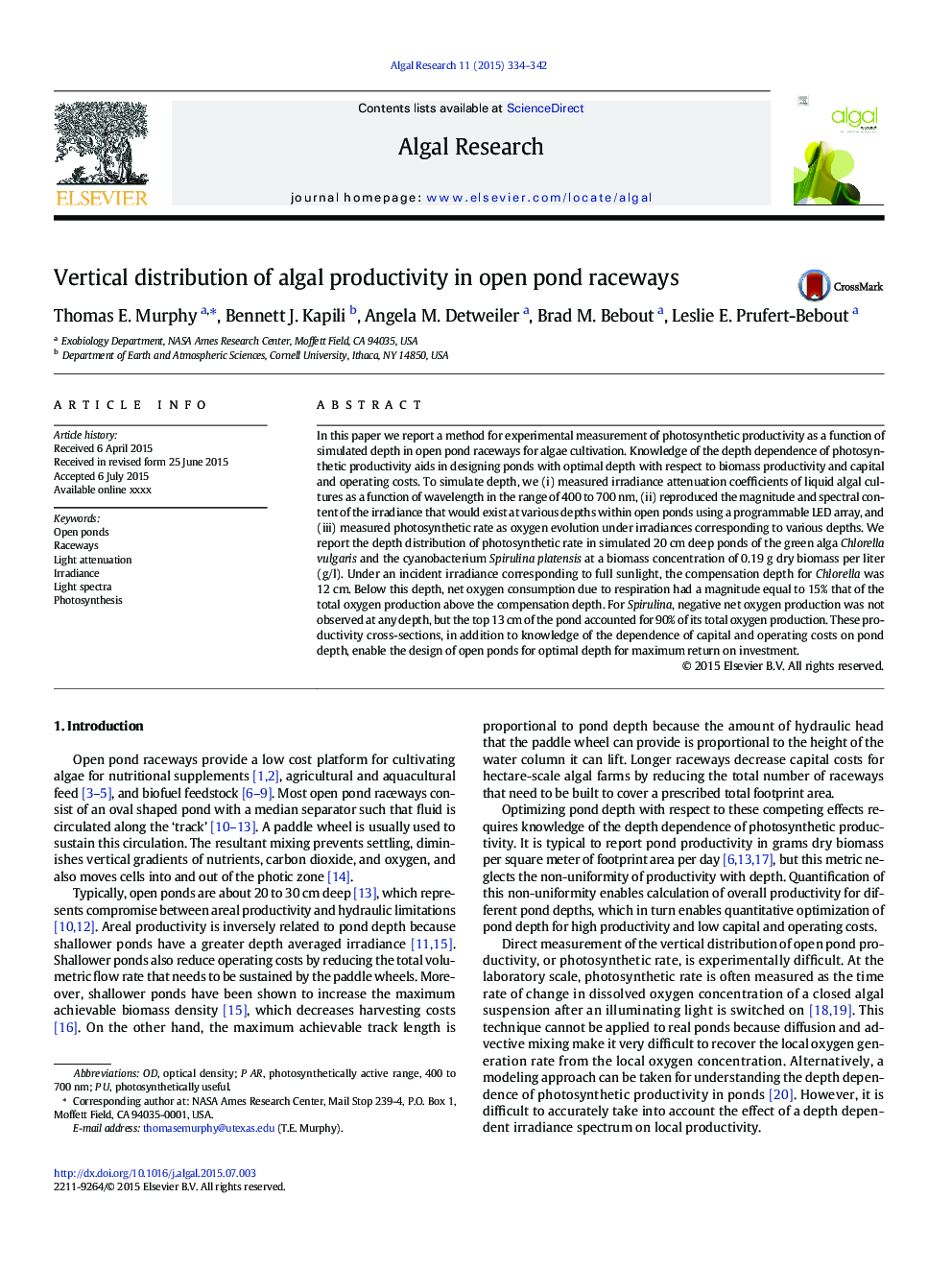| Article ID | Journal | Published Year | Pages | File Type |
|---|---|---|---|---|
| 8088018 | Algal Research | 2015 | 9 Pages |
Abstract
In this paper we report a method for experimental measurement of photosynthetic productivity as a function of simulated depth in open pond raceways for algae cultivation. Knowledge of the depth dependence of photosynthetic productivity aids in designing ponds with optimal depth with respect to biomass productivity and capital and operating costs. To simulate depth, we (i) measured irradiance attenuation coefficients of liquid algal cultures as a function of wavelength in the range of 400 to 700Â nm, (ii) reproduced the magnitude and spectral content of the irradiance that would exist at various depths within open ponds using a programmable LED array, and (iii) measured photosynthetic rate as oxygen evolution under irradiances corresponding to various depths. We report the depth distribution of photosynthetic rate in simulated 20Â cm deep ponds of the green alga Chlorella vulgaris and the cyanobacterium Spirulina platensis at a biomass concentration of 0.19Â g dry biomass per liter (g/l). Under an incident irradiance corresponding to full sunlight, the compensation depth for Chlorella was 12Â cm. Below this depth, net oxygen consumption due to respiration had a magnitude equal to 15% that of the total oxygen production above the compensation depth. For Spirulina, negative net oxygen production was not observed at any depth, but the top 13Â cm of the pond accounted for 90% of its total oxygen production. These productivity cross-sections, in addition to knowledge of the dependence of capital and operating costs on pond depth, enable the design of open ponds for optimal depth for maximum return on investment.
Related Topics
Physical Sciences and Engineering
Energy
Renewable Energy, Sustainability and the Environment
Authors
Thomas E. Murphy, Bennett J. Kapili, Angela M. Detweiler, Brad M. Bebout, Leslie E. Prufert-Bebout,
